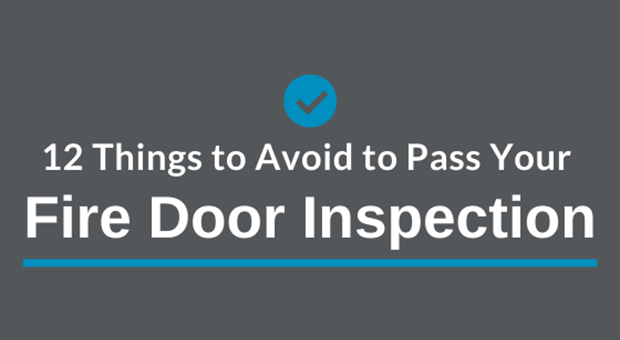Keeping a facility up to code and safe for occupants is a crucial role for a building owner or facility manager. When it comes time for a facility’s fire door inspection, a building owner/facility manager wants to ensure they pass inspection. At LaForce, we offer comprehensive fire door inspections, where our team can review a facility’s fire doors, smoke doors, and/or egress doors. Our fire door experts are knowledgeable, helpful, and are FDAI/IQP certified through DHI. Below are some common problems our fire door experts witness during inspections.
Top 12 Problems During a Fire Door Inspection:
- The fire door label is missing or painted over.
- Incorrect clearances on the top, hinge and lock edges of the door. This means there is a gap between the door and frame which exceeds 1/8” for wood doors or 3/16” for steel doors.
- The use of mechanical products that keep a fire door open, such as kick down door holders, wedges, hooks, or overhead holders. Only fire rated (labeled) hold opens that are tied electronically into a building’s fire detection system should be used.
- The supplementary hardware interferes with the intended function of the door. For example, adding products that could prevent a door from closing and latching.
- The fire door is blocked and stays in the open position. A fire door should not be propped open, and should remain closed when not in use.
- Boxes, furniture, and equipment are blocking the fire door. This type of material would add a “fuel load” at the door during a fire, which would cause the door to fail. Openings that are no longer needed should be removed and replaced with a wall that meets the fire rating of the adjacent walls.
- Hardware is broken, defective, or missing.
- The use of non-fire rated panic hardware. If panic hardware is used, it must be the type specially designed for use on fire rated openings and it must have a visible label that identifies it as both Fire Exit Hardware and Panic Hardware.
- The fasteners are missing or are not the correct type for the hardware they are holding in place.
- Bottom flush bolts that do not project ½” into the floor strike.
- Signage attached to doors that exceeds 5% of the door surface and/or is attached with nails or screws. All signage should be attached using adhesives. Learn what and how you can attach things to a fire door.
- Unused fastener holes not filled by proper methods. Unused fastener holes need to be filled with steel screws or a special fire door caulk designed and approved specifically for use on fire doors.
These tips as well as FDAI guidelines will allow for a facility owner to keep occupants safe during a fire. Once the LaForce fire door inspection is complete, our team will develop a customized report for the facility and will reinspect any openings that were found to be non-compliant.
Interested in learning more about fire door inspections? Check out LaForce’s fire door inspection video or brochure to learn more. Or fill out our easy-to-use contact form to learn more and schedule your fire door inspection today!



Follow Us